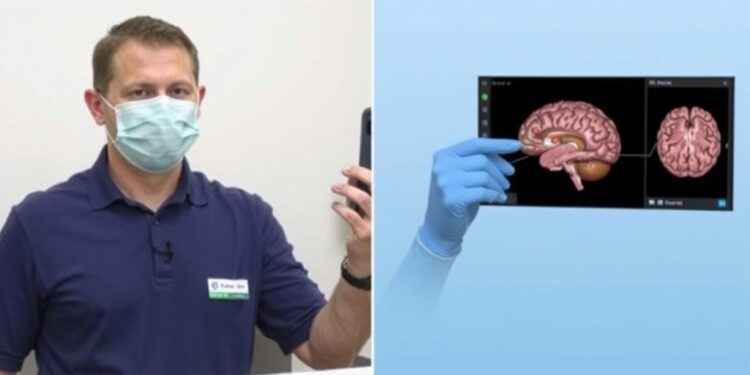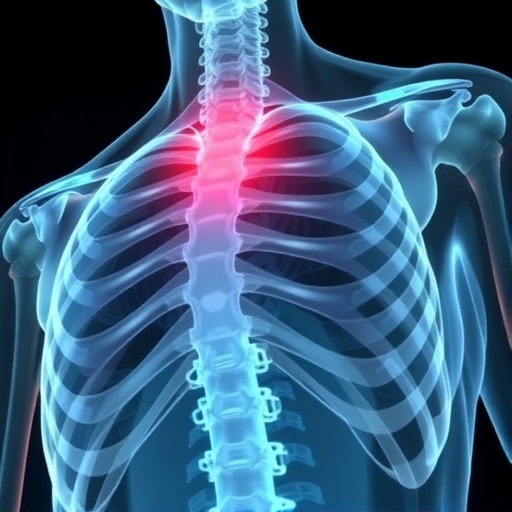In a groundbreaking pilot study, researchers have demonstrated that augmented reality (AR) guidance for placing external ventricular drains (EVDs) offers enhanced accuracy compared to traditional freehand techniques. Frederick Van Gestel, MD, a neurosurgery resident at Universitair Ziekenhuis Brussel and a PhD researcher at Vrije Universiteit Brussel in Belgium, led this innovative research along with a team of skilled colleagues. The findings, which indicate that AR assistance reduces the need for reinterventions and minimizes complications, have been published in the journal Neurosurgery, a reputed platform overseen by the Congress of Neurological Surgeons and the Lippincott portfolio.
Conventional neuronavigation systems are predominantly limited to operating rooms due to their cumbersome nature and static setups. According to the researchers, these systems necessitate complex mental transformations as surgeons rely on 2D information displayed remotely and translate this into 3D actions at the patient’s bedside. In stark contrast, the novel AR technology offers three-dimensional overlays on the surgeon’s direct view of the patient, infusing real-time, relevant data that enhances decision-making and procedural execution.
This new AR navigation system utilizes the commercial Microsoft HoloLens II headset, integrated with specially developed surgical navigation software that keeps the entire navigation system self-contained within the headset. This novel approach streamlines the workflow, eliminating the need for cumbersome external cameras or computers that burden traditional navigation systems. The procedure begins with preoperative imaging, creating a precise 3D model of the patient’s anatomy that is marked with coordinates critical for effective AR guidance, particularly the foramen of Monro.
To facilitate precise tracking of the patient’s head position during the procedure, an infrared-labeled reference frame is affixed to the patient’s head using a clamping headband. This setup is fundamental for ensuring the AR application accurately aligns the virtual anatomy with the physical counterpart. The critical path to the foramen of Monro is established using this advanced system, focusing on determining the shortest distance between the skin surface and the ipsilateral frontal horn of the lateral ventricles, thereby reducing unnecessary traversing of brain tissue.
As neurosurgeons prepare the trajectory for the EVD placement, they can manipulate and adapt the proposed path dynamically using the infrared-tracked stylus. This adaptability helps surgeons account for inherent anatomical variations or pathologies, allowing the surgical approach to be confirmed with confidence. The AR system provides a 3D visual representation of the trajectory and necessary anatomical information directly onto the patient, offering immersive perspectives that enhance spatial awareness and surgical precision.
A notable component of this innovative navigation system involves a tracker attached to the surgical drill itself. This real-time monitoring indicates both the translational and angular discrepancies between the drill bit’s position and the intended trajectory; errors exceeding predefined limits trigger a color-coded feedback mechanism. Once the drill bit’s positioning aligns appropriately according to the planned trajectory, the system provides continuous alerts during drilling, ensuring optimal alignment throughout the procedure.
The pilot study involved Dr. Van Gestel and three other neurosurgeons applying the AR navigation system during 11 EVD placements in critical care settings. They meticulously compared these outcomes to a control group of 11 patients who received EVD placements through traditional freehand methods, performed by one of the participating surgeons. This comparative analysis yielded significant results, illustrating that AR guidance dramatically improved overall placement efficacy and functionality, with marked differences in successful placements, optimal outcomes, and the absence of failed attempts.
In the AR-assisted cohort, every procedure resulted in a successful EVD placement compared to only a portion of successful placements in the freehand group. The contrast was stark, with nine successful placements in the AR group against five failures in traditional techniques, highlighting a compelling correlation between AR guidance and improved surgical outcomes. Furthermore, while no revision was necessitated after the AR-guided placements, four revisions in the freehand group accentuated the complications frequently associated with traditional techniques that rely on multiple attempts at insertion.
The implications of this research extend beyond mere statistics; they underscore the critical importance of first-attempt success, particularly in neurosurgical procedures where precision is paramount. The challenge of achieving successful ventricular punctures in cases of slit ventricle syndrome becomes significantly pronounced when making multiple attempts, making the case for adopting AR-guided methods increasingly compelling. Building upon the success of this pilot study, the research team is poised to initiate a multicenter randomized controlled trial slated for the end of 2025, further investigating the benefits of this innovative technology in broader clinical contexts.
The introduction of augmented reality into neurosurgery poses a crucial evolution in how medical professionals approach complex procedures. As technology continues to advance, the ongoing integration of AR into various surgical disciplines is expected to enhance accuracy, increase safety, and ultimately improve patient outcomes. This novel technology symbolizes a transformative shift in the field of neurosurgery, paving the way for new methodologies that may redefine best practices in the operating room. Through collaborations like these, the future of surgical interventions lies in innovation, knowledge translation, and improved patient care.
These initial findings highlight the potential of augmented reality technology in revolutionizing surgical practices, particularly in high-stakes environments where precision is non-negotiable. The study advocates for the need to integrate technological advancements into clinical settings actively. As we move toward a digital future in healthcare, the adoption of such innovative solutions will be paramount in enhancing surgical safety and efficacy.
Subject of Research: Augmented Reality Guidance for External Ventricular Drain Placement
Article Title: High-Accuracy Augmented Reality Guidance for Intracranial Drain Placement Using a Standalone Head-Worn Navigation System: First-in-Human Results
News Publication Date: March 20, 2025
Web References: Neurosurgery Journal
References: None available.
Image Credits: Not provided.
Keywords: Augmented Reality, Neurosurgery, External Ventricular Drain, Surgical Innovation, Clinical Research, Patient Outcomes
Tags: accuracy in surgical proceduresadvancements in neurosurgical techniquesaugmented reality in neurosurgeryclinical validation of AR technologyenhancing decision-making in surgeryexternal ventricular drain placementinnovative surgical navigation systemsMicrosoft HoloLens II in medicineneurosurgery research and developmentpilot study on AR assistancereal-time surgical guidancereducing complications in neurosurgery





